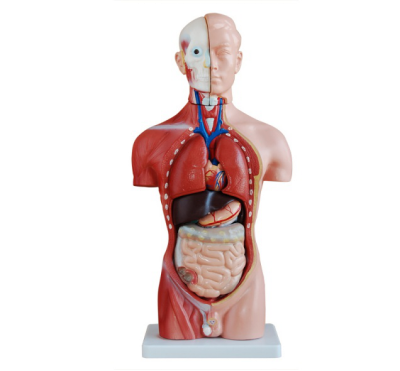25-06-2024
ADA MED SUPPLY LIMITED
Article tag: Asexual torso model medical torso model
The asexual torso model shows its unique and detailed ability to simulate the human anatomy system. Here's a detailed explanation of how it mimics the human anatomy system:

Main anatomical system display:
Asexual torso models are often able to simulate and demonstrate the major anatomical systems of the human body, such as the respiratory system, digestive system, urinary system, circulatory system, etc. These systems are embodied through different parts and organs of the model, providing intuitive learning and research tools for students and physicians.
Detailed organ structure:
The interior of the model contains numerous organs, such as the heart, lungs, liver, stomach, spleen, kidney, etc., which have been carefully designed and crafted to simulate their shape and position as realistically as possible. For example, the heart can be coronal dissected to show the structural similarities and differences between the left and right ventricles, and the lung can show its frontal section to show the intrapulmonary structure.
Detachable parts design:
Many of the asexual torso models are designed with detachable parts, allowing users to easily disassemble and assemble the model for a deeper view and understanding of the structure and position relationships of the body's internal organs. This design not only facilitates teaching, but also increases the practicability and interactivity of the model.
Precise anatomical sections:
In order to better show the structure and relationships of the internal organs of the human body, asexual torso models are often treated with anatomical sections at specific locations. These sections can be sagittal, coronal or transverse, which can clearly show the internal structure of the organ and the distribution of blood vessels, nerves and other tissues.
Mark and description:
In order to facilitate user understanding and memory, each organ or structural part on the asexual torso model is usually marked with a number or name, and is explained and explained in detail in combination with the manual. This helps users to understand the organ structure of human anatomy more accurately and improve the learning effect.
Clinical application value:
In addition to its application in teaching, asexual torso model also has certain clinical application value. Doctors can use these models for clinical skills training and to simulate surgical procedures, improving surgical skill and safety. At the same time, the model can also be used for patient education and communication to help patients better understand their condition and treatment options.
In summary, the asexual torso model successfully simulates the human anatomy system through its detailed organ structure, detachable component design, accurate anatomical section, and labeling and description, providing strong support for medical teaching, clinical training and patient education.